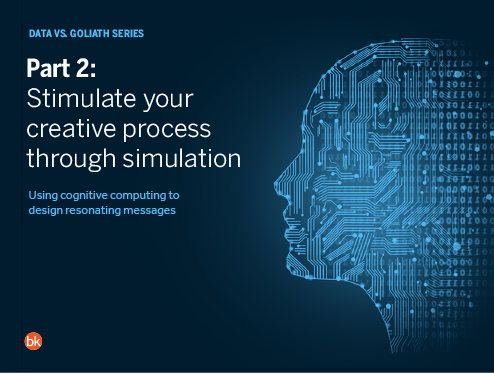Before customer data was so readily available and the number of mediums became countless, advertising was simpler. Still a challenge, but simpler.
I think of Mad Men, particularly when they come up with the idea for lipsticks in season 1. What we watched was a focus group of their target audience (young women of the 1960s) try on various hues of lipsticks and answering questions from the company’s market researcher.
Once they figured out the copy – and the copywriter in this case – the episode is done with this plot.
The thing is… today, that’s only half the job. Where does this ad go? Does it come out as an email blast, mailouts, text messages, billboards, a magazine, etc.? They never tell us the base strategy of the campaign, which personally bothers me, because the slogans they decide on are so abstract that I can’t wrap my head around a medium that works with the copy. I see a vague design, but not a medium.
In part 1 of these series, we talked about how cognitive computing mimics human thoughts and opinions. In that statement alone, so much is unsaid by the person, like:
- Do I know this brand?
- Is this something I’ve heard of?
- Do I know anyone who uses or recommends this?
- Is this brand honest?
- Will I waste my money here, or get tricked?
- Do I expect any repercussions or stigmatization for using the brand?
- Do I actually need to buy this?
Learning how your customers (active or potential) behave prepares you for these questions moving forward. The good news is once you identify this information and let it evolve with your growing or changing clientele, you get to go back to creative part.
Why do you need to do the strategy first? It might seem more fun to come up with catchy slogans with your coworkers and then make it an advertisement… because it is. However, your medium decides the roots of the message you choose, and sometimes, what you come up with doesn’t fit where you want to advertise. Slogans for a billboard may not work for a commercial spot. A magazine ad may not work for mailed postcards.
Once you know how (strategy) and where (medium) you want to advertise, you have guidelines to work with. Cognitive computing brings you there more quickly, by helping you see the way your customers think and feel – with real numbers that you can trust. Then you use these results to start brainstorming, which is already stronger due to your focus on your audience and your medium. It’s much easier to be creative with a directly, then to just pull ideas out of the idea.
Don’t skip Part 1. Check it out here.
Amanda Lovewell is a copyeditor for bloomfield knoble. She works to keep the brand voice intact for us, and for our clients. She lives for any form of artistic expression, especially music. One day, she would love to travel creating short stories about her misadventures.

